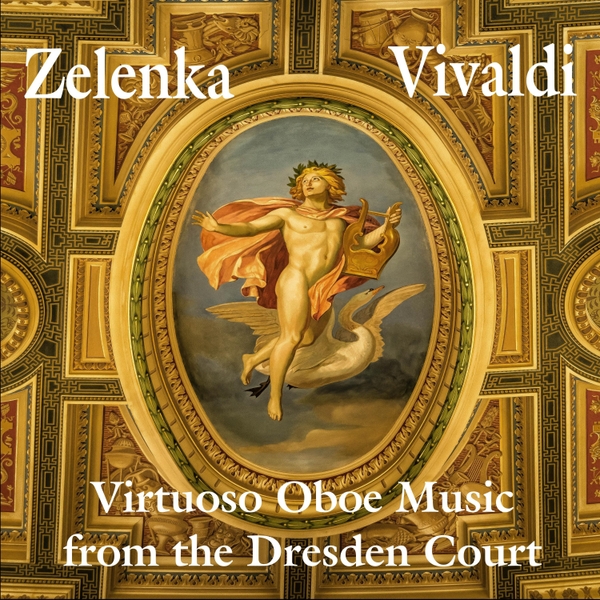
Stephen Hammer and Kathleen Staten hautboys
Rhoda Patrick bassoon
Nigel North theorbo
Michael Willens violone
Myron Lutzke violoncello
Zelenka, Vivaldi, and Dresden in the Augustan Age
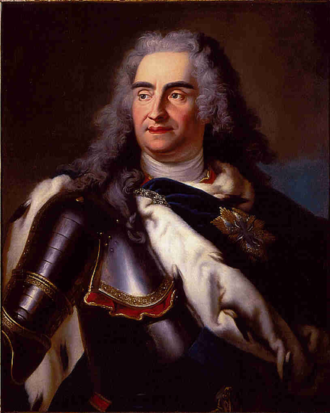 Friedrich August I (1670-1733), the Elector of Saxony known as “August the Strong,” was endowed with a keen intelligence, shrewd political ambition, and a prodigious appetite for the many pleasures of life. As a young prince he had taken the customary Grand Tour, developing a taste for French theater and poetry and Italian opera, and had visited Versailles, where he saw the political benefits of spectacular architecture and ostentatious cultural display at the court of Louis XIV. A man of enormous refinement and charm comparable with those of Louis himself, August was also a confirmed hedonist, reportedly fathering 354 natural children. By the time he inherited the Saxon throne in 1694, he had also conceived a master plan to make his court in Dresden the political and cultural heart of central Europe, employing a strategy of cunning diplomacy and exotic artistic exhibitionism.
Friedrich August I (1670-1733), the Elector of Saxony known as “August the Strong,” was endowed with a keen intelligence, shrewd political ambition, and a prodigious appetite for the many pleasures of life. As a young prince he had taken the customary Grand Tour, developing a taste for French theater and poetry and Italian opera, and had visited Versailles, where he saw the political benefits of spectacular architecture and ostentatious cultural display at the court of Louis XIV. A man of enormous refinement and charm comparable with those of Louis himself, August was also a confirmed hedonist, reportedly fathering 354 natural children. By the time he inherited the Saxon throne in 1694, he had also conceived a master plan to make his court in Dresden the political and cultural heart of central Europe, employing a strategy of cunning diplomacy and exotic artistic exhibitionism.
In 1697, August sought the additional elected title of King of Poland, with dominion over a large empire. Through threats, bribery, and fortunate timing he secured the necessary votes from the Polish nobility, but a small obstacle remained – by law the Polish king had to be Catholic, and August had been born and raised Lutheran. To overcome this inconvenience he converted to Catholicism, and to the alarm of his Protestant subjects began holding Papist services in Dresden and later had its old opera house transformed into a church for that purpose. He was then able to reign in Poland as King Augustus II.
August initiated an ambitious long-term building program for Dresden, with new palaces, theatres, gardens, arches, and fountains heavily influenced by Italian architecture and French grandeur. The Zwinger palace, designed by Matthäus Daniel Poppelmann and decorated by Alessandro Mauro, contained a large courtyard for outdoor festivities and what was to become the most important opera house in Europe. By the middle of the 18th century, Dresden was known as “Florence on the Elbe” and remained one of the most beautiful cities in the world until its destruction by the Allied fire-bombing of 1945.
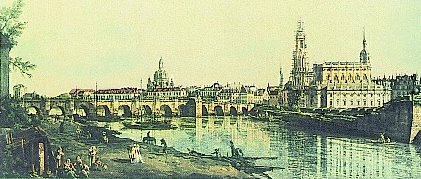
August encouraged all the creative, decorative, and performing arts; he commissioned and purchased a vast collection of painting and sculpture, formed a company to perform Italian opera, planned and executed elaborate and exotic spectacles and pageants at his court, and engaged eminent artists of all disciplines and nationalities to reside in Dresden either temporarily or permanently.
Great musicians from all over Europe were invited to live in Dresden and were paid handsomely; from among them August formed a brilliant instrumental ensemble called the Cappella Polacca which accompanied the Catholic church music, and also went with him on his state journeys to Poland and elsewhere. One feature of this ensemble, unique at the time, was that its members were only required to play one instrument; the Cappella quickly became known as the greatest collection of virtuosi ever assembled. These included Johann David Heinichen as Kapellmeister, the violinists Volumier, Pisendel and Veracini, the flautist Buffardin, oboists Richter, Le Riche and Quantz (later the famous flautist and teacher of Frederick the Great), the famous lutenist Silvius Leopold Weiss, and the Bohemian contrabassist and composer Jan Dismas Zelenka. Possibly the most impressive and exotic musician of all (and the most highly-paid except for Weiss and the Kapellmeisters) was one Pantaleon Hebenstreit, who performed on a instrument of his own invention called the “Pantaleone,” a giant dulcimer nearly three meters in length, playing with wooden hammers on its 189 strings.
Despite August’s statecraft and genius for cultural display, Saxony was not a major military power. As a consequence of the Great Northern War, a power bid by Charles XII of Sweden that began in 1699, August was forced to abandon the Polish throne temporarily from 1706 until 1710. Following this reversal he felt it advisable to build stronger ties with the Austrian empire, and undertook to cement a very valuable alliance by marrying his eldest son, later to become Elector Friedrich August II, to Princess Maria Josepha of Austria. The Crown Prince had been schooled to August’s tastes in the arts, and like his father was sent on several extended Grand Tours of the great European centers including an extended visit to Venice in 1716-17. He had already been converted to Catholicism in 1713, against his mother’s wishes.
The wedding took place the summer of 1719 in Vienna, and the subsequent arrival in Saxony of the Electoral Prince and Princess that September was marked by the most impressive festivities that August could produce. As the Jesuits reported in their annual letter to Rome, “throughout the nuptial celebrations there were stage performances so regally lavish that spectators who had come from more distant regions claimed that they were equal to those of ancient Rome.” Three operas by Lotti, including the premiere of Teofane, were performed in the glorious new opera house at the Zwinger palace, serenades and divertissements were performed on the Elbe, plays were given in both French and Italian. The Prince and Princess themselves arrived in Dresden by water in a replica of the Venetian state gondola in a welcoming procession organized by the Elector himself, incorporating an astounding array of national styles: Polish scarlet and blue and Saxon blue and yellow themes predominated, but Spanish, Turkish, and Swiss dress were also featured in a dazzling display of silver fittings, black and gold lace, tiger-skins, blanketed horses, carriages, barouches, trumpeters, tympani, huntsmen and guards. Nobility from all over Europe were in attendance, and marveled at the opulence of the event and of the Dresden court. With the consummation of his alliance with Austria, and with the magnificence of the accompanying festivities, August had established his court as the center of political hegemony and cultural importance in central Europe without firing a shot.
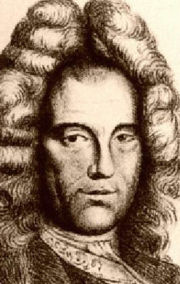 Jan Dismas Zelenka (1679-1745) was born in a small Bohemian village, studied in Prague, and had arrived in Dresden by 1712, where his skill as a contrabassist earned him a position with the Cappella Polacca. Zelenka had also studied composition and had written several sacred and instrumental works while in Prague. This ability was not lost on Heinichen, who as court Kapellmeister was responsible for producing large quantities of music for the Elector’s Catholic services, and who became aware that the arrival of Maria Josepha and her attendants would require church music on an even grander scale in the latest Austrian Catholic style. To improve his skills, Zelenka was sent to Vienna to study with Johann Joseph Fux, the resident composer of the Austrian court who had “written the book” on species counterpoint, Gradus ad Parnassum (Steps to Paradise).
Jan Dismas Zelenka (1679-1745) was born in a small Bohemian village, studied in Prague, and had arrived in Dresden by 1712, where his skill as a contrabassist earned him a position with the Cappella Polacca. Zelenka had also studied composition and had written several sacred and instrumental works while in Prague. This ability was not lost on Heinichen, who as court Kapellmeister was responsible for producing large quantities of music for the Elector’s Catholic services, and who became aware that the arrival of Maria Josepha and her attendants would require church music on an even grander scale in the latest Austrian Catholic style. To improve his skills, Zelenka was sent to Vienna to study with Johann Joseph Fux, the resident composer of the Austrian court who had “written the book” on species counterpoint, Gradus ad Parnassum (Steps to Paradise).
By the time he returned to Saxony, Zelenka had accumulated a unique combination of attributes as a composer: a fundamental Bohemian sensibility which included a fondness for heavy dance rhythms and syncopations, exposure in Dresden to refined French style, florid Italian operatic conventions, and the exotic harmonies and virtuosic instrumentalism of the Cappella Polacca, and familiarity with the Catholic liturgy and strict formal counterpoint as taught by Fux. Following the arrival of the Austrian princess in 1719 and the temporary dissolution of the Italian opera by scandal in 1720 (precipitated during rehearsal of the new opera Flavio Crispo when the famous castrato Senesino loudly accused Heinichen of being unable to set Italian words properly, tearing up the score and flinging it at the composer’s feet), extravagant church music became the central focus of the Dresden musical establishment, and Zelenka became one of its most important composers, holding the honorary title of “church composer” until his death in 1745. Among Zelenka’s admirers was Johann Sebastian Bach, who from the nearby city of Leipzig kept in close touch with the Dresden court and repeatedly sought a position there, submitting in 1733 as a sample of his ability to write Catholic music a Kyrie and Gloria dedicated to the Elector; these became the first two parts of his Mass in B-minor.
Zelenka’s six extraordinarily vivid sonatas for oboes, bassoon, and continuo (ZWV181) can be viewed as derivative of the Italian and Austrian “church sonatas” with their ingenious and sophisticated use of imitative and fugal writing. They date from around 1720, but little is known of their circumstances or purpose; it is possible that Zelenka wrote them as a Fux-inspired exercise in counterpoint, or as a demonstration for potential patrons of his skill as a composer. An autograph score of all six sonatas can be found in the Dresden State Library, along with performing parts for three of them written out by Zelenka and a copyist. Five call for two oboes, while the last one (#3 in the volume) substitutes a violin for one of the oboes; all six sonatas call for bassoon, which sometimes plays the basso continuo part, and sometimes deviates from it to play a fourth voice. Therefore, it is not accurate to assign these works to the common Baroque genre of “trio-sonatas” because a fourth voice is active much of the time.
The writing for oboes and bassoon is among the most difficult ever composed, indicating that the sonatas were intended for the virtuosi of the Cappella Polacca; Richter would almost certainly have been one of the oboists but the identity of the other oboist and the superhuman bassoonist are unknown. An interesting problem in re-creating a performance lies in the choice of continuo instruments, but the manuscripts and history offer us some clues: the continuo parts of both the fourth and fifth sonatas are marked tiorba ờ violone and since the Cappella included Weiss, the famous lutenist, and Zelenka himself was a bass player (the term “violone” could loosely signify any bass string instrument), it is quite possible that the entire set of sonatas was originally accompanied by only those two instruments without any harpsichord or other keyboard augmentation.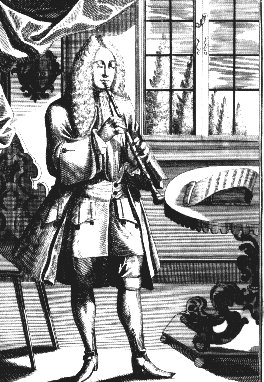
In the course of the six sonatas, Zelenka delights listeners with a wonderful palette of international colors and flavors. Spicy Oriental dissonances and augmented intervals are everywhere, so are heavy Bohemian rhythms. In the Italian concerto-grosso style first movement of 181/5, August’s relationship with Poland is honored: the jolly unison ritornello mimics the Polka form, and punctuated with florid solo passages. The fourth movement of 181/6 takes the form of a French menuet en rondeau. But Zelenka’s training in species counterpoint is always lurking in the background, often mischievously: the whimsical fourth movement of 181/4, in elbow-swinging 6/8 meter, begins with a 27-measure theme so extended as to be reminiscent of PDQ Bach. This theme is meticulously played by the first oboe, bassoon, and second oboe in turn, and then turned on its head, inverted and fragmented with bizarre harmonic twists, all in the strictest contrapuntal style.
When the future August II visited Venice in 1716-17, the musical complement of his entourage was led by Pisendel and Richter, and apparently also included Zelenka, who had received extra funds from the court for travel expenses at about that time. While there, they encountered a number of Venetian composers including Lotti, Scarlatti, and 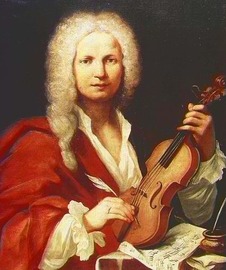 Antonio Vivaldi (1678-1741), with whom Pisendel studied briefly. Vivaldi, in turn, was evidently fascinated by the exotic Cappella musicians, and wrote several pieces exploiting their strikingly dark and expressionistic style, which he presented to Pisendel along with manuscripts of some of his earlier compositions. These works, also to be found in the Dresden state library, include several large concerti grossi dedicated to the Dresden orchestra, a violin concerto for Pisendel, and two flamboyant oboe sonatas probably composed for Richter in c-minor (RV53) and g-minor (RV28). They also include an earlier autograph manuscript of a charming sonata a quattro for violin, oboe, organ obbligato, and chalumeau ad libitum which plays the bass line an octave higher. Evidently the orphans at the Ospedale della Pieta had originally played this sonata (the names of the girl-musicians appear in the score) and Vivaldi subsequently gave the score to Pisendel. Therefore, even though Vivaldi never visited Dresden, his name can be added to the long list of composers and virtuosi who enriched the musical life of its Augustan Age.
Antonio Vivaldi (1678-1741), with whom Pisendel studied briefly. Vivaldi, in turn, was evidently fascinated by the exotic Cappella musicians, and wrote several pieces exploiting their strikingly dark and expressionistic style, which he presented to Pisendel along with manuscripts of some of his earlier compositions. These works, also to be found in the Dresden state library, include several large concerti grossi dedicated to the Dresden orchestra, a violin concerto for Pisendel, and two flamboyant oboe sonatas probably composed for Richter in c-minor (RV53) and g-minor (RV28). They also include an earlier autograph manuscript of a charming sonata a quattro for violin, oboe, organ obbligato, and chalumeau ad libitum which plays the bass line an octave higher. Evidently the orphans at the Ospedale della Pieta had originally played this sonata (the names of the girl-musicians appear in the score) and Vivaldi subsequently gave the score to Pisendel. Therefore, even though Vivaldi never visited Dresden, his name can be added to the long list of composers and virtuosi who enriched the musical life of its Augustan Age.
— Stephen Hammer